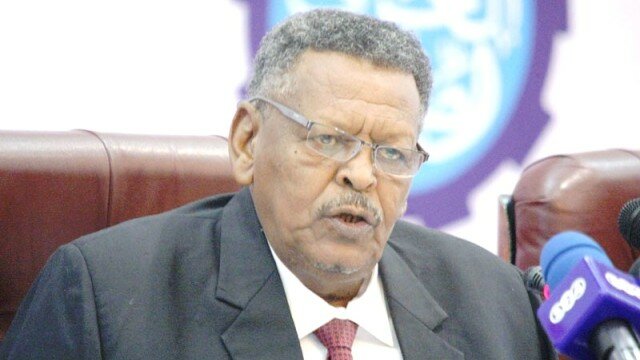The Brookings Institute Africa Growth Initiative (AGI) launched its eighth annual Foresight Africa report
on Wednesday, January 17, an in-depth look at six overarching themes that will shape the continent in the coming year. Experts convened to offer insights on these critical regional trends and provide recommendations for national governments, regional organizations, multilateral institutions, and key stakeholders. This is a review of the main issues that the Foresight has focused on.
The global dividends of Africa’s industrialization
Many experts are lamenting the fate of advanced economies, still at risk of secular stagnation—a prolonged period of insufficient growth that can only be addressed by unconventional monetary policy and unsustainable financial conditions. In fact, the main problem that has plagued the global economy for much of the past decade is inadequate aggregate demand due to deflated balance sheets of households; constrained fiscal options
in high-income countries where there seems to be a fiscal stimulus “fatigue” and an obsessive focus on public debt; and exhaustion of the uses of monetary policy, especially when the financial sector lacks the incentives
and effective tools to fund medium- and long-term profitable investment. These suboptimal macroeconomic conditions are compounded by the perpetuation of inequality within nations—especially with respect to access to the job market, to education, and to capital.
All these obstacles are fueling anger, resurgent populism, despair, and helplessness in many social groups.
Fortunately, the resilience of some emerging economies has kept global growth afloat. Last year they accounted for nearly 75 percent of global growth (China’s annual growth average of 9.6 percent for the past 38 years is something that will be studied in economic history books for centuries to come). But as they approach the technology frontier, they too are facing the risk of lower potential output due to population aging and lower total factor productivity growth. African economies have substantially improved their general macroeconomic conditions and performance but are still trapped in the trade of unprocessed commodities whose prices declined sharply in 2014. Despite a remarkable performance (last year, 13 African countries grew above 5 percent and 17 grew between 3 and 5 percent), the continent is not creating enough wealth and jobs to help reduce poverty and mitigate the risks of conflicts and disorderly migrations.
Under such circumstances, a straightforward solution to the problem of global growth would be for rich economies to devote a small fraction of their poorly used financial resources to finance infrastructure in developing countries where profitable investment opportunities and business ventures abound. African industrialization is indeed the most reliable driver for global prosperity and peace for decades to come.
It would spur economic development on the continent, provide the much needed boost to aggregate demand, and lift global growth while generating new employment opportunities in advanced and developing economies.
African industrialization should not be financed through old forms of foreign aid with miserable connotation but through a series of new global pacts combining substantial amounts of public and private money in search of good returns (including pension funds and sovereign wealth funds). This would require accommodative monetary policy and fiscal stimuli that are wasted in rich countries be channeled into profitable infrastructure projects that abound in developing countries.
Instead of trying to fill large infrastructure deficits indiscriminately around the world, multilateral development banks could help build a series of well-targeted industrial parks and quality infrastructure in developing countries, and provide advice and training on products quality standards to make nontariff measures ineffective. Everybody would win. And the world would be a much safer, happier place.
Infrastructure, skills, and competition are key elements of the investment climate. African firms pay a high productivity penalty because of poor infrastructure. High-speed data transmission is critical to exporting a wide range of services and especially to IT intensive exports. A necessary condition for developing tourism is adequate tourist related infrastructure. Investments in trade logistics are essential to agro-processing and horticulture exports. Skills matter as well. Attempts to expand the IT-enabled services industry have encountered manpower constraints. The skills needed to interact with tourists and provide back office services are critical to high-quality tourism. Lack of competition in transportation markets represents a significant barrier to competitiveness.
Exporting offers opportunities to acquire capabilities and enhance productivity, but individual firms face significant barriers to export. To address this, governments need to develop a package of trade and exchange rate policies, public investments, regulatory reforms, and institutional changes designed to increase the share of nontraditional exports in GDP. To date, few countries have succeeded in implementing such an “export push” strategy.
Agro-processing, horticulture, and ICT-based services—like manufacturing—benefit from agglomeration economies. Geography also plays an obvious role in tourism; tourist facilities tend to cluster close to the tourism resource. Governments can support agglomerations by concentrating investments in high-quality institutions and infrastructure in a special economic zone (SEZ). Ethiopia is successfully pursuing such an approach in both manufacturing and services, but the majority of Africa’s
SEZs have failed to attract a critical mass of firms.
Globally, trade policy has an important role to play. Escalating tariffs in Asia for higher-stage processing of commodities discourages the development of Africa’s agro-industrial value chains. Here, China could play a leading role by shifting its preferential trading agreements from bilateral deals to a single, well-publicized Africa-wide initiative. Another priority is to implement the World Trade Organization Trade Facilitation Agreement (TFA) fully. In
recent years, as concessional finance has become constrained, governments have turned to private borrowing. Because sovereign borrowing often involves high costs and short maturities, a better alternative would be to allow creditworthy countries to borrow from the non-concessional windows of the World Bank and other multilateral development banks.
Structural change in Africa is a “road less travelled by.” While some countries— perhaps those in coastal locations—will transform their economies through manufacturing, others will be able to turn to high value-added agriculture, agroindustry, and tradable services. From the perspective of public policy, it is, happily, not an either/or choice. Better national and global policies can support structural change— with or without smokestacks.
-
Assessing Regional Integration in Africa (3)Next >


